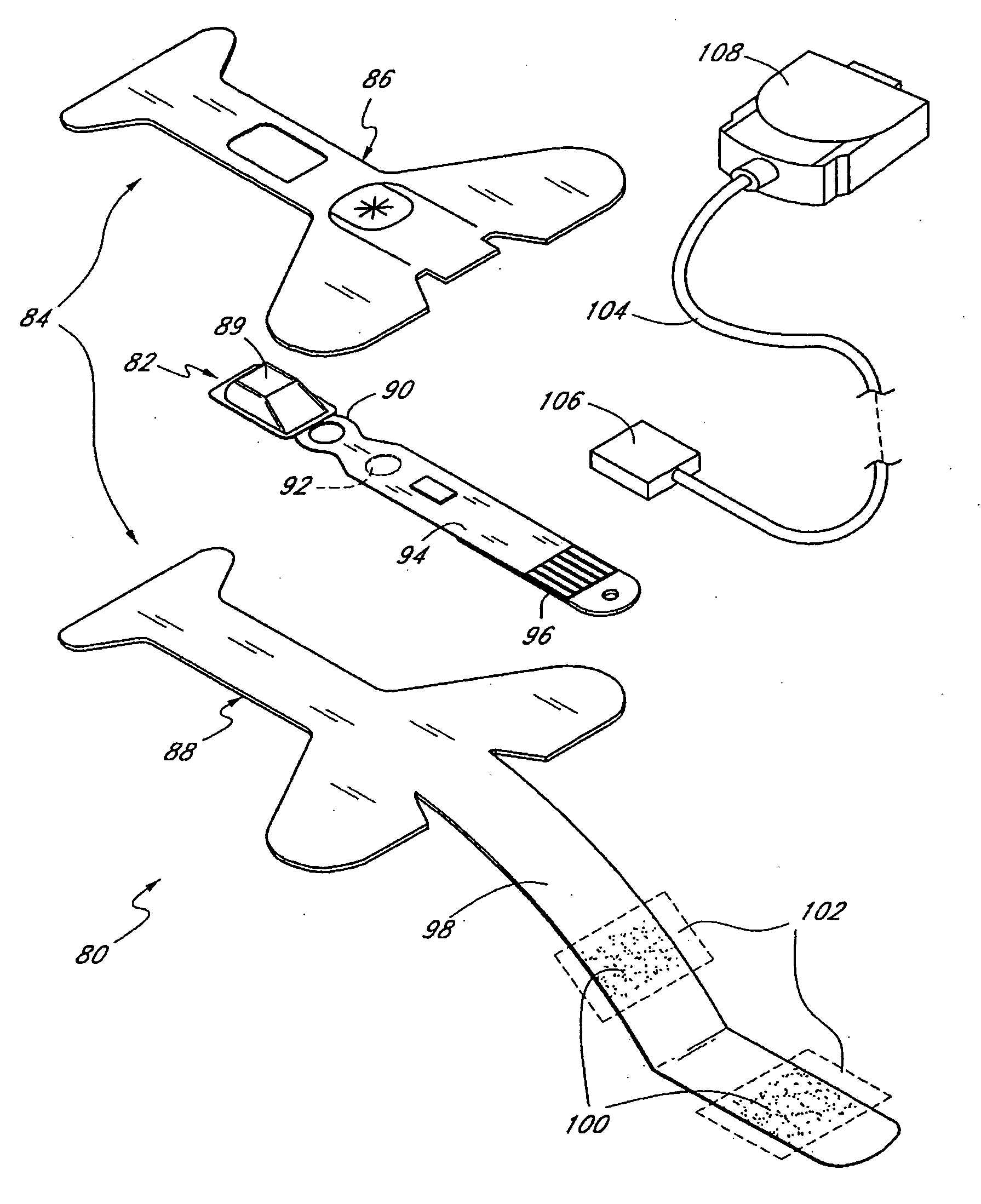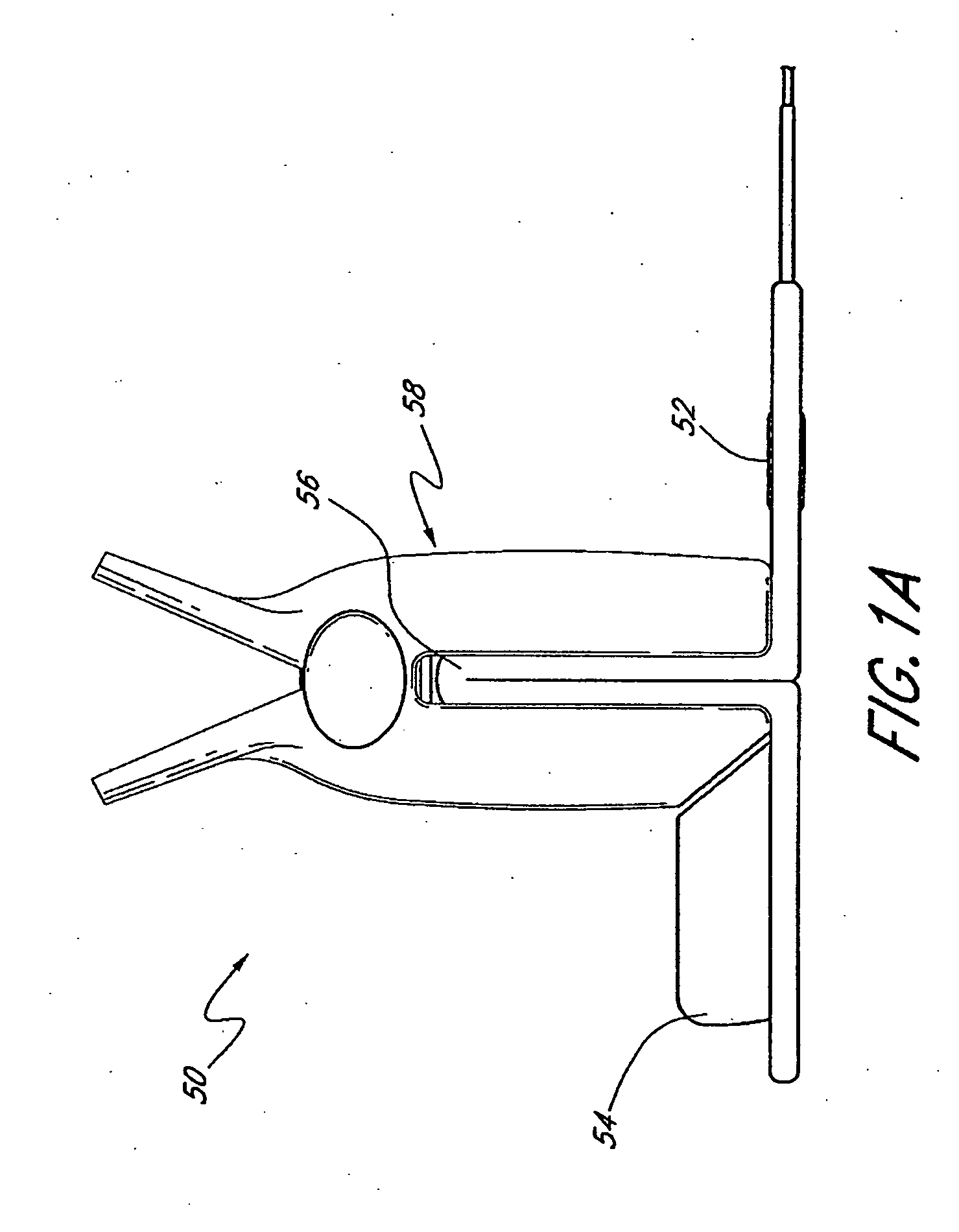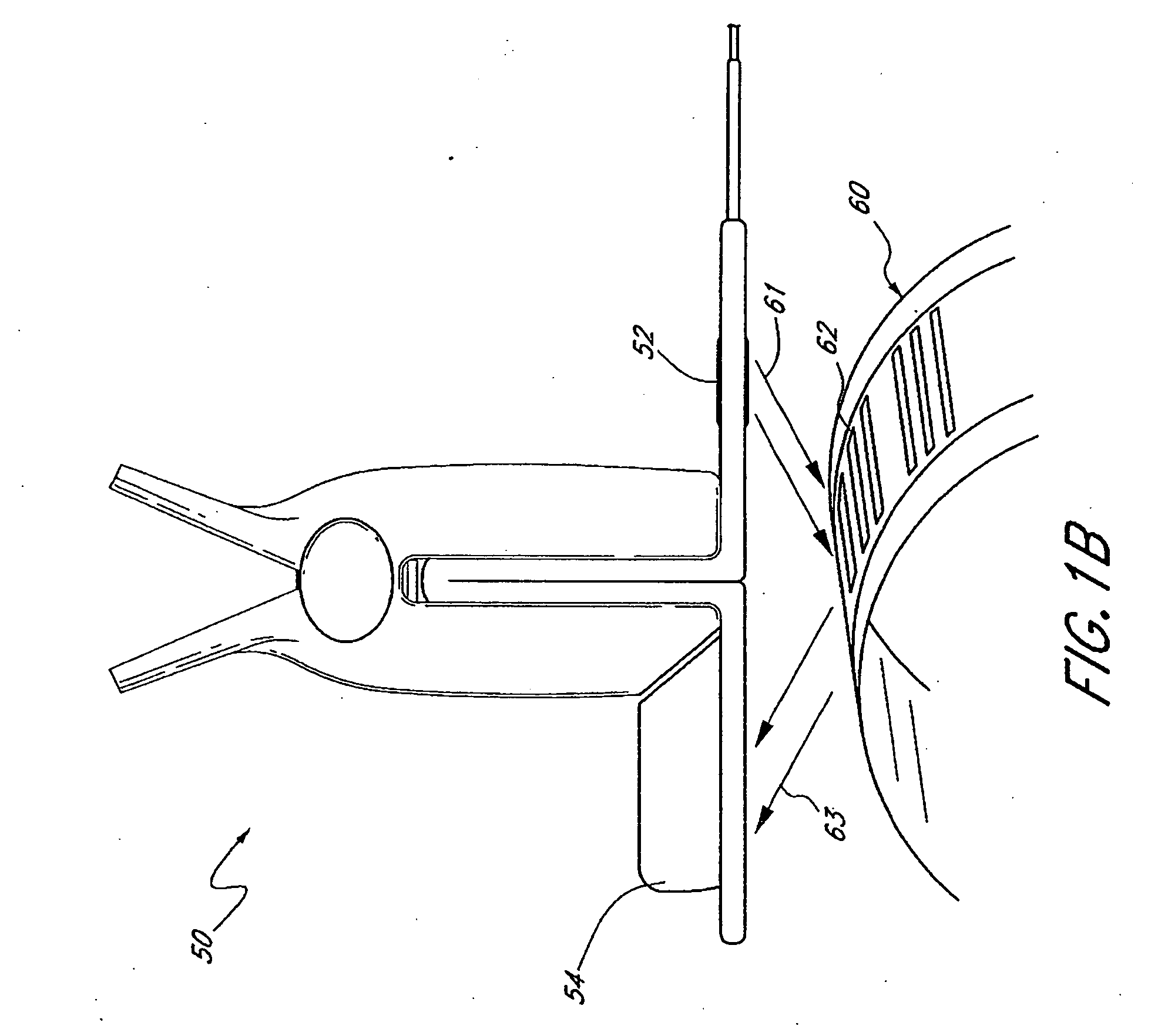Patient identification using physiological sensor
a physiological sensor and patient technology, applied in the field of patient monitoring, can solve the problems of increasing the difficulty of caregivers in identifying patients, the drawback of employing specialty sensors that can be costly to implement, and the repetition of procedures and time-consuming, so as to facilitate the positioning of sensors
- Summary
- Abstract
- Description
- Claims
- Application Information
AI Technical Summary
Benefits of technology
Problems solved by technology
Method used
Image
Examples
Embodiment Construction
[0029]FIG. 1A illustrates one embodiment of a physiological sensor 50 configured to identify a patient. In this embodiment, the sensor 50 is preferably an oximetry sensor with an emitter 52 and a photodetector 54. The distance between the emitter 52 and the photodetector 54 is reduced by folding a portion 56 of the sensor between the emitter 52 and photodector 54, thereby creating sufficient proximity between the emitter 52 and the detector 54 that they can be employed in the acquisition of patient information from, for example, encoded information such as a bar code. Thus, in this embodiment, the existing electronic elements of the pulse oximeter sensor are advantageously positioned to perform bar code reading functionality. Such positioning can be accomplished through a variety of low cost structures or mechanisms, examples of which are described herein with reference to FIGS. 1A, 2, 3, and 4. However, an artisan will recognize from the disclosure herein other mechanisms for prope...
PUM
 Login to View More
Login to View More Abstract
Description
Claims
Application Information
 Login to View More
Login to View More - R&D
- Intellectual Property
- Life Sciences
- Materials
- Tech Scout
- Unparalleled Data Quality
- Higher Quality Content
- 60% Fewer Hallucinations
Browse by: Latest US Patents, China's latest patents, Technical Efficacy Thesaurus, Application Domain, Technology Topic, Popular Technical Reports.
© 2025 PatSnap. All rights reserved.Legal|Privacy policy|Modern Slavery Act Transparency Statement|Sitemap|About US| Contact US: help@patsnap.com



